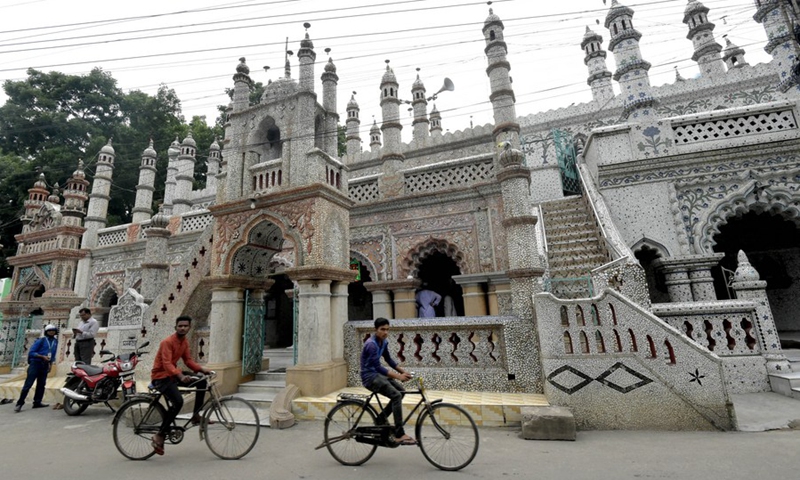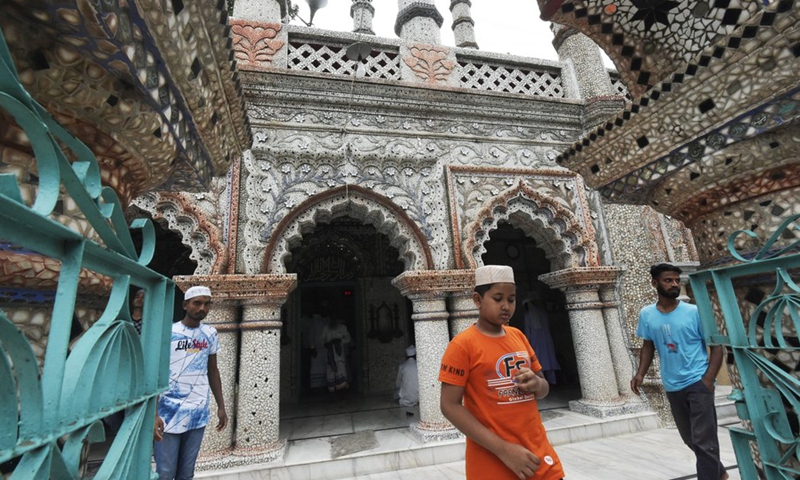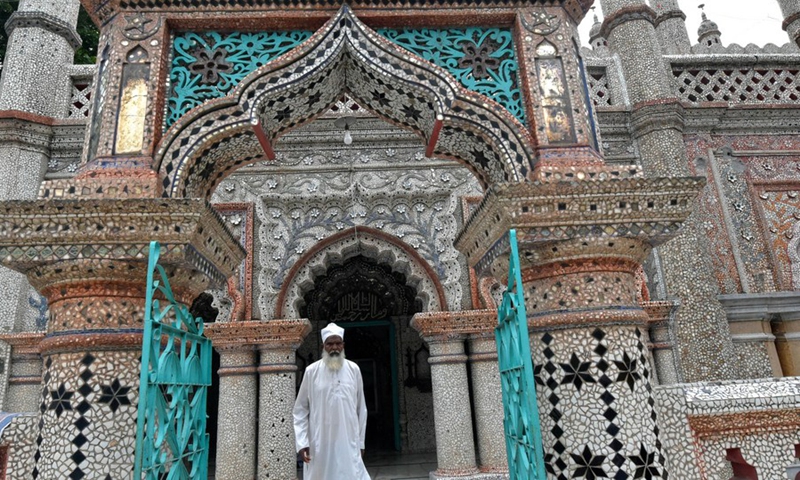
Photo taken on May 17, 2022 shows the Chini masjid in Nilphamari, Bangladesh.(Photo: Xinhua)

People visit Chini masjid in Nilphamari, Bangladesh on May 17, 2022.(Photo: Xinhua)

Photo taken on May 17, 2022 shows the Chini masjid in Nilphamari, Bangladesh.(Photo: Xinhua)
Chini Masjid in Nilphamari, 360 km northwest of Bangladesh's capital Dhaka, is a unique piece of architecture that has drawn crowds of tourists for centuries.
Built in 1863, the beautiful masjid is in the standard architectural style of buildings associated with Islamic tradition. What makes Chini Masjid special is the 25 tons of Chinaware plates and pieces of glass that adorn the walls.
So resplendent were the marvelous China ceramic and stone pieces that the place of worship soon became known as the "Chini Masjid", attracting visitors from far and wide.
BUILT BY THE PEOPLE
Hafez Muhammad Arif Reza is the muezzin, the person of a mosque who proclaims the call to the daily prayer from a minaret five times a day. He told Xinhua that the mosque was built in 1863 by Haji Bakir Ali Ahmed as a little prayer room. Descendants of Ahmed extended and modified the masjid, beautifying it with decorative Chinese ceramics brought from Kolkata, India.
"The people built the mosque gradually with their own contributions," said the muezzin.
The mosque is divided into three parts, one built during the British period, one during the Pakistan period and the most recent in modern Bangladesh. It has not been renovated since its inception.
"Many tourists from home and abroad now come to visit our mosque," he said.
FASCINATING TECHNIQUES
To decorate Chini Masjid, nearly 300 pieces of cross marble stones were used. Along with the cross marble stones, around 25 tons small chips of Chinaware-plate and pieces of glass, both color and non-color, were also used, making it one of the most fascinating and distinctive architects in Bangladesh.
Rahimul Haque Afrat, a student at North South University in Dhaka came to Nilphamari with friends, just to see the masjid.
"We're fascinated by the artistry," he said. "This type of architecture is not seen much in Bangladesh, it would fascinate anyone."
"My friends and I were very impressed. We loved it."
